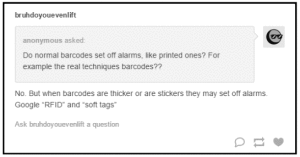 Initial and continued on-the-job training is one of the most effective ways to curb shrinkage and loss. When done correctly it can reduce employee theft, lower shoplifting loss, cut down on administrative mistakes and catch vendor fraud. Unfortunately, it’s become one of the most dreaded parts of a job.
Initial and continued on-the-job training is one of the most effective ways to curb shrinkage and loss. When done correctly it can reduce employee theft, lower shoplifting loss, cut down on administrative mistakes and catch vendor fraud. Unfortunately, it’s become one of the most dreaded parts of a job.
It’s dreaded, by both managers and employees, for a good reason. On-the-job training has become confused with and replaced by the employee meeting, which is usually boring, poorly run and downbeat. But, they aren’t the same thing.
Over the years experts have promoted replacing the “old way” of individualized on-the-job training (and management) with the “new and time saving” plan of having employee meetings instead. The idea of managing and training people by group, rather than individually, is becoming the norm.
Supervisors are trying to change and manage behavior through group meetings, instead of properly training (at first and on a continuing basis) employees individually. But, that way of managing only goes so far with good or average employees, and it especially doesn’t work with problem ones.
It’s not uncommon for a new policy to be created as a response to one or two people’s problem behavior. The policy is then presented in an employee meeting as a store wide issue, rather than the individual one it actually is. Often, new policies don’t need to be written – the old ones just need to be enforced.
They need to be enforced at the individual on-the-job training or coaching level. Employee meetings are, at best, ineffective places to address one person’s behavior; at worst, they undermine management’s credibility and authority.
For example, this was overheard in a retail store – “Don’t forget the employee meeting at 3. You know, where we all get yelled at for something Brittney and Josh are doing, but the team leaders are too scared to say anything to them.” (These weren’t their real names.)
It’s a given that proper training is the best defense against mistakes, loss and shrinkage. Employee meetings are good places to give information and do general training. But, the best and most effective training is still individual coaching based on the employee’s strengths and weaknesses.
Nicole Abbott is a writer and psycho-therapist with over 20 years of experience in the fields of mental health and addiction. She’s an educator, consultant, lecturer, trainer and facilitator, who has conducted over 200 workshops, trainings, presentations, college classes and seminars.




 eir knowledge to others who may be new to the game. Much like a tenured LP manager taking a green agent under their wings.
eir knowledge to others who may be new to the game. Much like a tenured LP manager taking a green agent under their wings.







